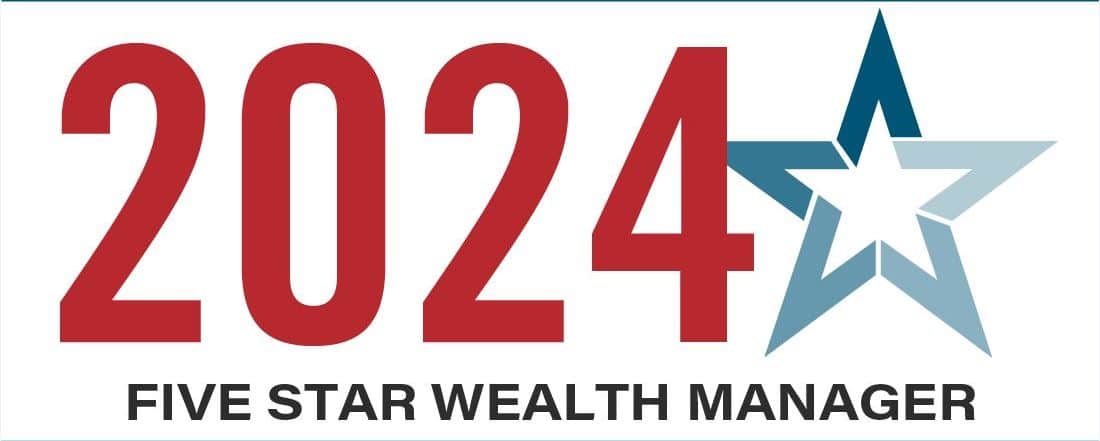As year-end approaches, it’s a good time to ensure you’re positioned to maximize your financial benefits and tax opportunities. This frequently requires taking action before year-end. We’ve compiled a list of top financial moves to make and questions to consider before the close of 2024.
1. Maximize Contributions to Retirement Plans
Maximizing your savings and minimizing your taxes are likely important goals. Review your retirement contributions to ensure that you have reached or will reach your goal before year-end. If you are age 50 or older, don’t forget about catch-up contributions that allow you to save more. The catch-up contribution limits increase in 2025 for individuals turning 60, 61, 62 or 63 in 2025.
401(k), 403(b) and TSP Maximum Contribution Limits
| 2024 | 2025 | |
| Any Age Traditional Contribution | $23,000 | $23,500 |
| Additional Catch-Up Contributions (age 50+) | $ 7,500 | $7,500 |
| -or- | ||
| Additional Catch-Up Contributions for individuals turning 60, 61, 62 or 63 in 2025 | N/A | $11,250 |
2. Maximize Health Savings Accounts
If you have a high deductible health insurance plan, health savings accounts (HSAs) are powerful. Your contributions are tax-deductible and allow you to pay current or future health care expenses on a tax-free basis. HSA account balances can accumulate and be used at any time.
HSA Contribution Limits
| 2024 | 2025 | |
| Self-Only | $4,150 | $4,300 |
| Family | $8,300 | $8,550 |
| Additional Catch-Up Contributions (age 55+) | $1,000 | $1,000 |
3. Utilize and Plan for Your Flexible Savings Account
Flexible Savings Accounts (FSA) also create a tax-advantaged way to pay for medical and other expenses with pretax dollars. If you have an FSA through an employer, make sure you are on track to spend your balance. Contributions cannot be rolled over to the next benefit year, unless the plan allows an extension to March. Confirm the deadline and remember to submit your receipts for reimbursement.
4. Contribute to Education Accounts
Contributions to 529 college savings plans offer tax-deferred savings benefits for your college funding objectives. Many states also offer state income tax deductions. If your state offers tax deduction benefits, remember to contribute before December 31. A few items to keep in mind:
- Parents and grandparents can create accounts.
- You could increase your deductions if each parent/grandparent establishes an account for each child/grandchild. Deduction laws vary by state.
- You can always contribute more than the state tax deduction limit relevant to your ultimate funding objectives.
- Tax deduction limits might be higher for seniors making contributions, depending upon the state.
5. Complete Charitable Gifts
Complete all of your intended charitable gifts before year-end, while being cognizant of the best method(s) relevant to tax planning. Here are three gifting practices that are tax-advantaged relative to traditional cash gifts.
Gifts of Appreciated Securities:
Rather than gifting cash, you might wish to consider gifting shares of appreciated securities. This strategy can enhance your tax benefits by receiving a tax deduction and reducing future capital gain exposure.
Bunching Gifts:
Many taxpayers forfeit a portion or all of their charitable deduction potential now that standard deductions are higher. “Bunching” a few years of contributions into a Donor Advised Fund (DAF) can help to increase your tax deduction potential.
Qualified Charitable Distributions:
If you are 70 ½ or older, you might gain the greatest tax benefit by making charitable distributions directly from your IRA account. These are known as Qualified Charitable Distributions (QCDs).
6. Review Your Capital Gains and Losses
Capital gains and losses from the sale of investment assets are part of your taxable income. If you have net realized capital gains, it’s important to identify any assets with unrealized capital losses that could be sold to mitigate your tax liability. SageVest actively reviews portfolio tax exposure on an ongoing basis, focusing on maximizing your net after-tax returns.
7. Take Your Required Minimum Distributions (RMDs)
If you are age 73 or older, don’t forget to take your Required Minimum Distribution (RMD) before December 31st. Failure to take your RMD can result in a tax penalty.
8. Inherited IRA Distributions
If you have an inherited IRA, determine if you have any RMDs before year-end. If you inherited an IRA post 2019, examine if elective distributions make sense relative to when you must deplete the account and your forward-looking taxable income.
9. Verify Your Tax Bracket
Evaluate if your income will be higher or lower this year. Variations can impact your tax bracket and possible tax planning considerations. For example, you might benefit from deferring or accelerating income if possible, modifying your charitable contributions, making an elective Roth IRA conversion, or other.
10. Consider a Roth IRA Conversion
Roth IRA accounts are powerful savings vehicles given their extremely favorable tax treatment. Evaluating a Roth IRA conversion is a worthy exercise if you are in a low-income tax bracket this year and/or your assets could be subject to estate taxes upon your death.
11. Evaluate Estimated Tax Payment Needs
It’s important to ensure you’ve made necessary estimated tax payments, particularly if your income has increased relative to the prior year, or your withholdings have decreased.
12. Plan for Business Income
Tax planning is critical if you’re a business owner or sole proprietor. Make sure you have a sense of required and/or proactive actions before year-end. These could include properly allocating income and expenses, payment of estimated tax payments, maximization of retirement plan options, or other.
13. Give to Family
If your wealth exceeds your lifetime needs, consider making family gifts, as appropriate and relevant to your values. The 2024 maximum annual exclusion gift amount is $18,000, allowing you to make tax-free gifts to family members. This amount is per person; therefore, if each spouse completes separate gifts to a child, the combined gifts can total $36,000.
14. Ensure Your Planning Is Up to Date
While tax planning is important, so too is evaluating if you are on track to securing your future financial objectives. Frequent (ideally annual) reviews of your long-term retirement plans and other financial planning are always recommended to ensure you are informed and making smart decisions.
15. Confirm You Are Comfortable with Your Investment Allocation
Your investment portfolio requires and deserves ongoing consideration regarding appropriate allocations. These should align with your long-term objectives and risk tolerance. Frequent reviews with your financial advisor are always recommended.
SageVest understands that your finances are not static. They change year-by-year. This is why we actively review all aspects outlined above and others on your behalf as part of our proactive wealth management approach. Please contact us to discuss any updates to your finances or your broader financial goals in greater detail.




